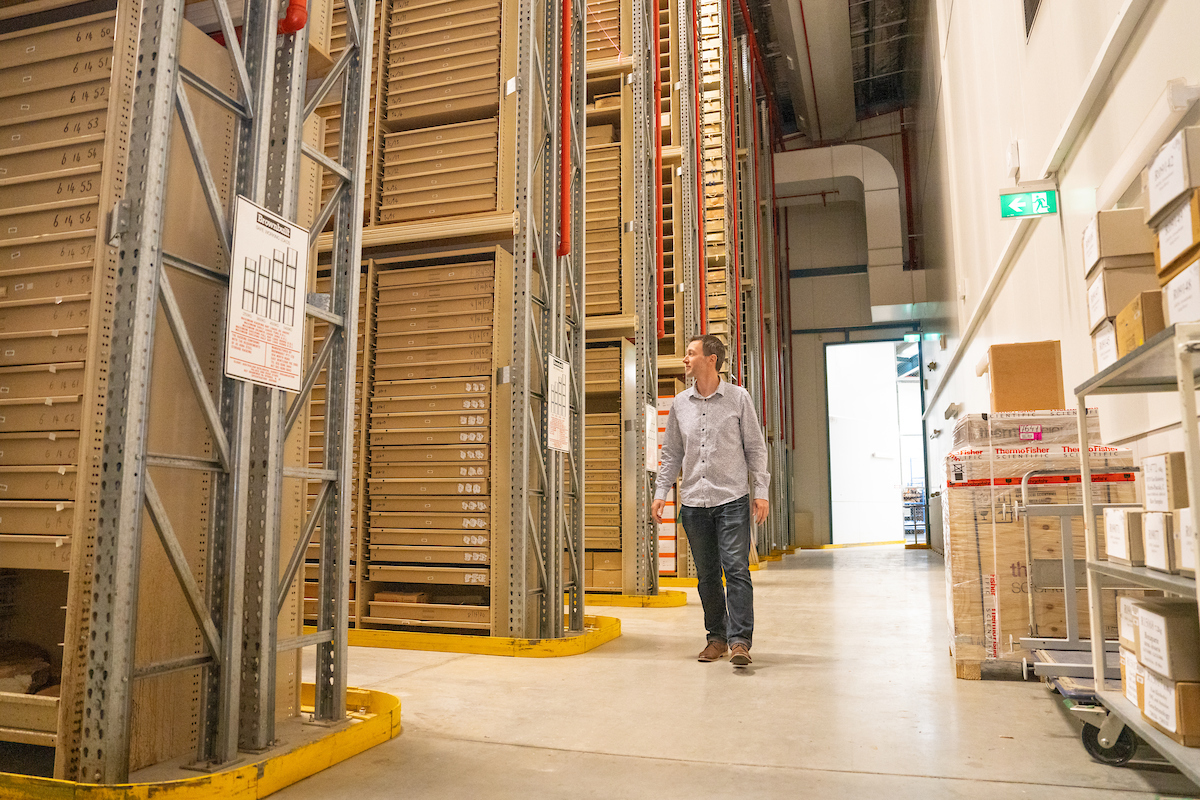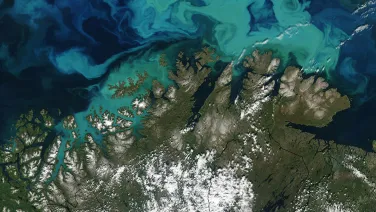
Unearthing stories from within the National Mineral and Fossil Collection
Steven Petkovski is the Museum Curator for the National Mineral and Fossil Collection at Geoscience Australia. He graduated from ANU with a Bachelor of Science and is now studying a Master of Science in Earth Sciences.
Peek behind the scenes as he describes what it’s like to work in a geological collection and provide public outreach for Australia’s key Commonwealth geoscience institution.

“We’re the custodians. When you have a national collection, it essentially belongs to everyone.
Part of my team’s role is to look after this collection and make it available for research and education. It inspires people and allows them to see the amazing things that nature can create.”

“About 60 per cent of the minerals are from Australia and 40 per cent are from overseas. We’ve purchased a number of large and significant collections over the decades, like our Broken Hill ‘Floss Campbell’ collection, purchased in 1963, which included a thousand specimens from this world famous mine.
There are all sorts of little stories – that’s what makes it a really fascinating collection. Every geologist knows how rocks tell stories, which we try to interpret and share. There are the mineralogical and paleontological stories, but then there are also the social narratives of how they were discovered, how they ended up in here, how they were used in research, and how they inspire people.”

“We organised this lunar touchstone display. It’s the only place in the Southern Hemisphere where you can actually touch a piece of the Moon. Astronauts in the final Apollo mission in 1972 flew over and picked up over 60 kilograms worth of samples. NASA cut off little slivers like this one from one particular piece, specifically dedicated to making touchstones. We’ve got this on long-term loan from NASA. It’s one of only eleven in the world.
It’s a basalt, which is a common rock here on Earth. But this one is unique in that it is 3.9 billion years old, has a high titanium content and has not been weathered by oxygen or water.
I try to touch it every day that I come into work and have a moment of ‘awe’. I think it’s fascinating.”

“This here is just a little small snapshot of our fluorescent mineral and fossil collection. It’s a bit of a lottery whether they do fluoresce under ultraviolet light or not as only a small percentage of minerals do.
Some are self-activating whilst others contain metal impurities known as activators. This one here is from an old zinc mine in the US, so the zinc, in the right quantity, is creating the fluorescence with the calcite showing orange and willemite being green in this example.”

“This is a local Canberra fossil. During the Silurian period, 425-odd million years ago, we were underwater; it was a sea here. This is a crinoid, or ‘sea lily’, which was actually found when they were digging the foundations for the David Jones building in Civic, 1966.”

“This is all paleontological material, mainly from Australia and its territories. These samples are waiting for researchers to borrow and study them. Most of the fossil samples haven’t been prepared. Within a particular rock, there may be multiple fossils and until a process called acid digestion has been applied, we don’t know if there could be a new species inside. So this is like a treasure trove waiting to be discovered.”

“I’ve been at Geoscience for over 20 years and I’ve been in the curator role for seven. The geological curator role is a bit of a jack-of-all-trades − from policies and procedures, to exhibition displays, loans, cataloguing, conservation, researching species, attaching labels and all that sort of stuff. It’s also about networking with people, helping to identify minerals and fossils for the public, managing teams of volunteers and staff, and dealing with media, public enquiries, donors, and hearing their stories. I find it really interesting talking to people. There’s so much geological knowledge out there that people have.
I was never one of those people who had a dream job in mind. I was happy to just do anything and work hard at it, but this role came up by chance and it’s just been the most fascinating thing since. I really get to apply a lot of what I studied as well, and go beyond that and look even deeper into it."

“Now I’m doing a Master of Science in Earth Sciences. I have a bit more of an idea what my interests and passions are now after so many years, so I thought it might be a good opportunity to do subjects and classes that really interest me. For example, my class this semester is a special topic and I'll be researching an impactite [a rock impacted by a meteorite] specimen from the collection here with planetary specialists Professor Penny King and Dr Marc Norman, so that’s really exciting.
I am very privileged to be able to work with a world-class collection and see it every day, and be around it. You can become very attached to the collection over the years. I often joke that I might be back here volunteering one day.”
Dig deeper into your own passions and interests with a Master of Science in Earth Sciences.



